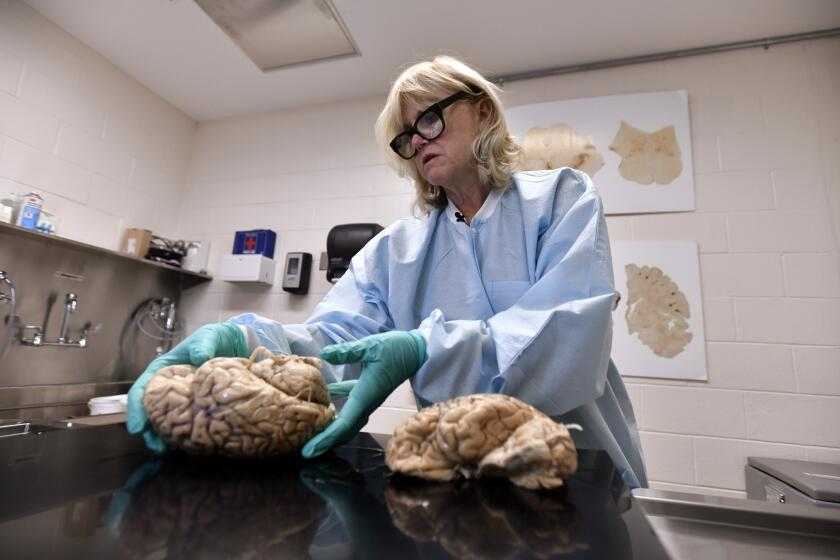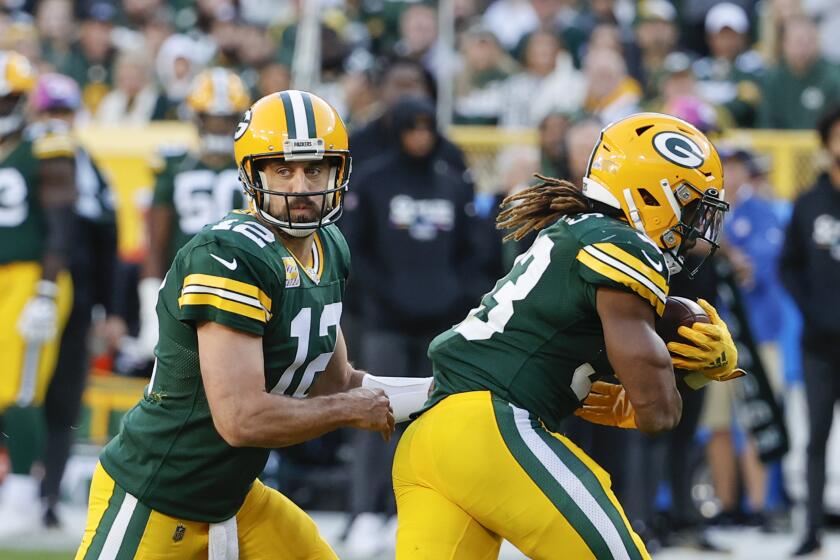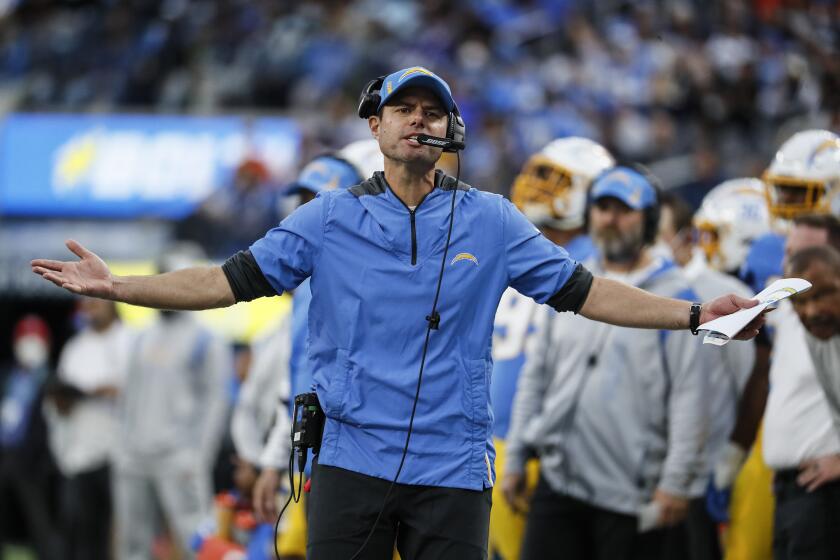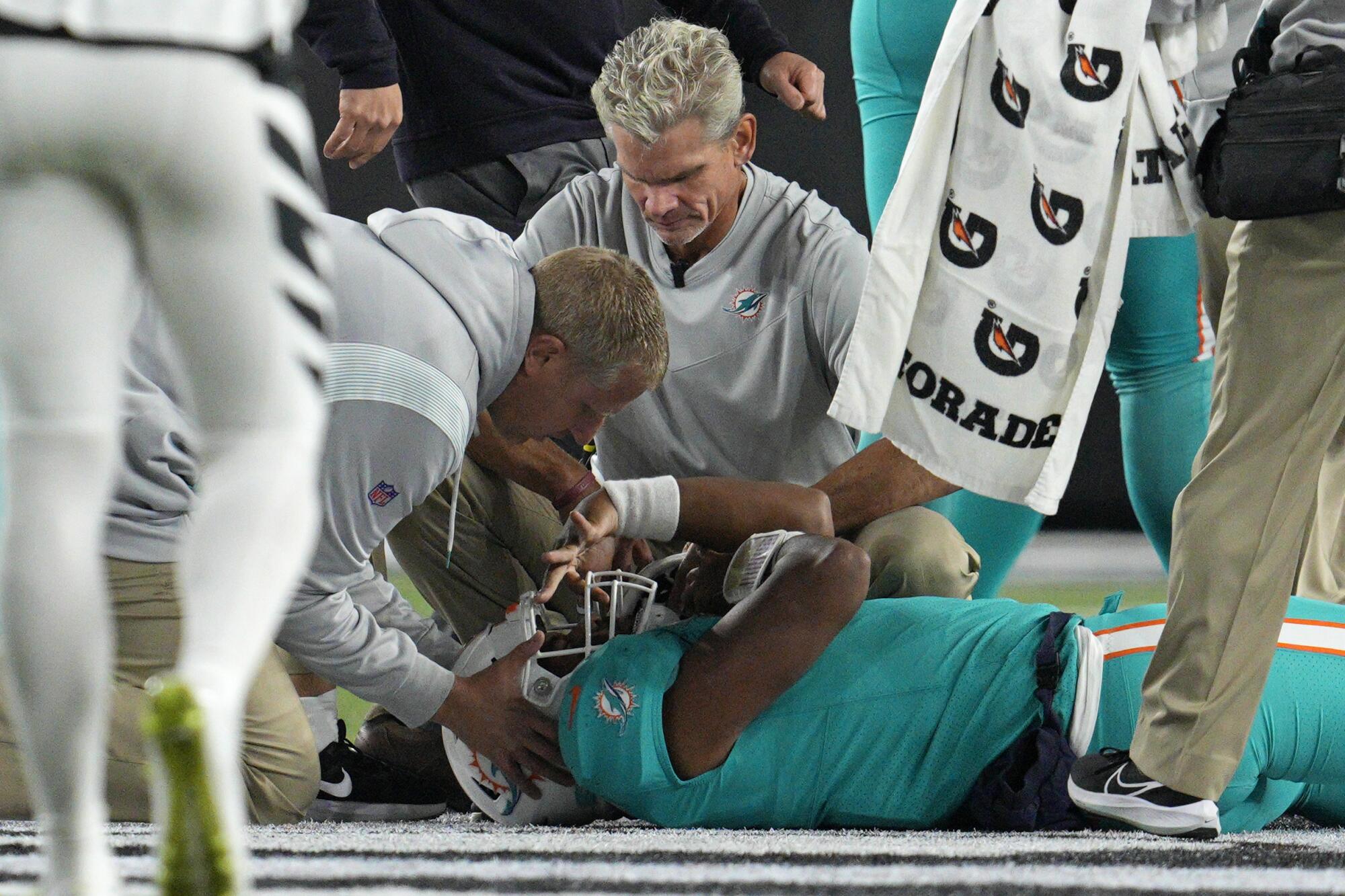
- Share via
First the hit, then the hands.
Miami Dolphins quarterback Tua Tagovailoa suffered a concussion after a hard hit in a Thursday night game against Cincinnati on Sept. 29 — probably his second head trauma in a four-day span — and his gnarled hands were frozen in an unnatural and deeply troubling way.
As he was on his back on the field, Tagovailoa’s rigid hands were spread wide and raised above his face, his fingers splayed in different directions. The cameras for Amazon Prime Video provided a close-up view.
Just as that injury reignited debate about the way the NFL handles concussions, so too have the network’s choices about which images to show — and for how long — prompted questions about how TV documents disturbing and sometimes gruesome injuries.
Fred Gaudelli, executive producer of “Thursday Night Football,” defended the decision to show six replays of the collision, including two of the hands, from various angles.
Kevin Ellison was known for hard hits while playing for USC and the Chargers. Did that lead to increasingly bizarre behavior before his death?
“He goes down and I look at the camera that’s shooting the quarterback and I see his right pinkie pointing in a direction that your pinkie doesn’t point in,” said Gaudelli, among the most respected and seasoned producers in the business. “So I’m thinking, ‘Holy smokes, he might have broken his finger.’ Then I look at the rest of them and I can see something’s happened. So we show two replays and go to a commercial.”
That’s when Gaudelli and his team sought the input of the show’s sports medicine consultant, longtime NFL trainer Mike Ryan, who informed them the twisted hands were the result of a fencing response, an involuntary reaction to a traumatic brain injury.
Coming out of the commercial, announcer Al Michaels quoted Ryan and Prime Video replayed a wider shot of the tackle in question. Tagovailoa, who was leading the league in passer rating, was carted off the field.
From that point, his injury was the story of the game, especially because of what had happened the previous Sunday against Buffalo, when he was knocked down while throwing a pass, then grabbed his head and stumbled as he was rising to his feet. At the time, the Dolphins diagnosed it as a back injury, although team physicians did not specifically examine him for that. The NFL said that Tagovailoa was examined for a concussion and passed all of the tests to return to play.
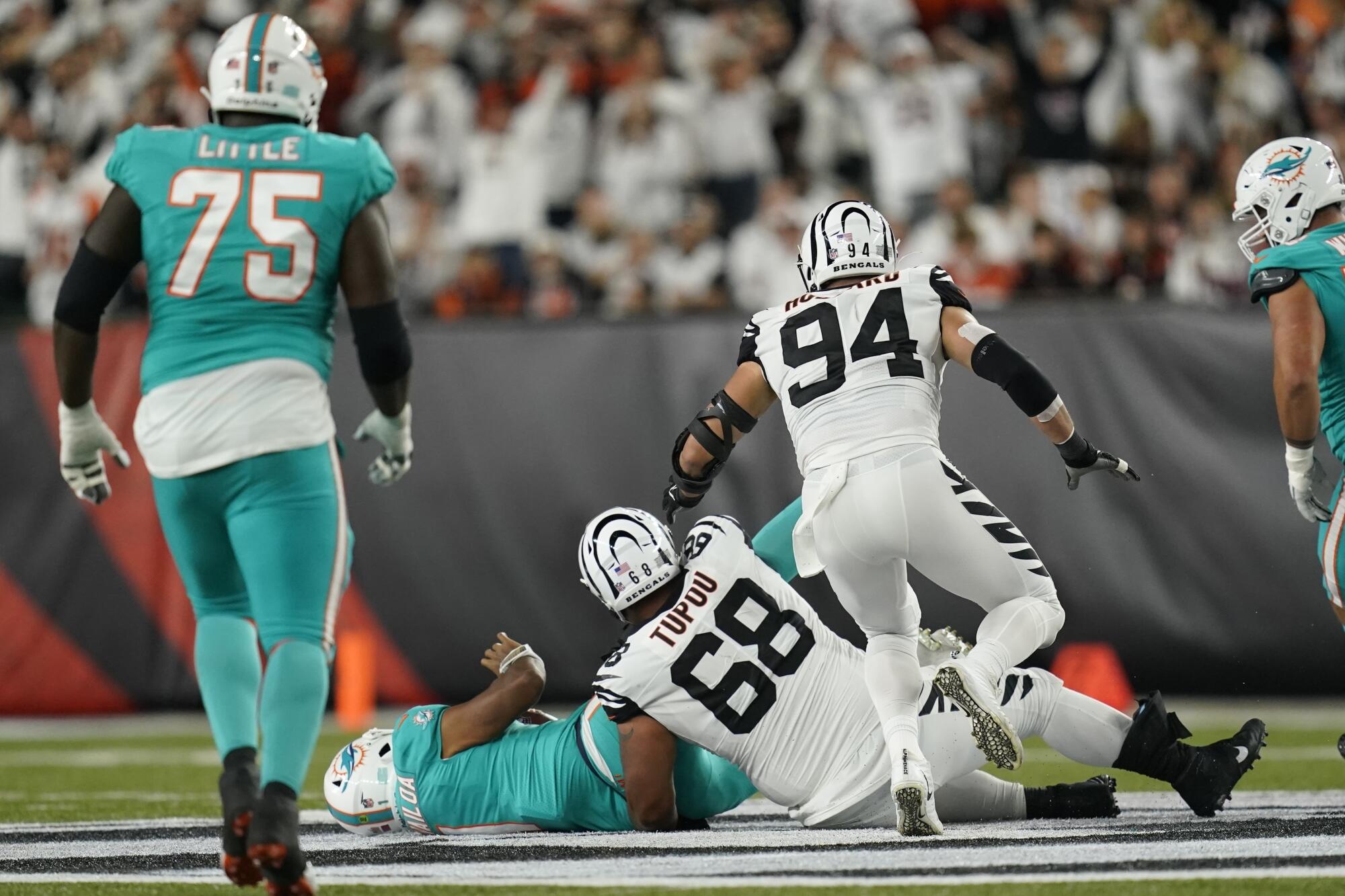
“You’re not going for drama. You’re going for documentation.”
— Fred Gaudelli, executive producer of “Thursday Night Football,” on showing multiple replays of Tua Tagovailoa injury
“Tua was a big story,” Gaudelli said. “He obviously had a very recent medical history that some people had called into question. So I thought that I was being responsible to my audience, which at the end of the day is the No. 1 place where my responsibility lies.”
Gaudelli said he has heard criticism from some that the network replayed the collision and aftermath too many times.
“I don’t think it was overdone,” he said. “I think the last piece of information I was able to get warranted showing it one more time so people knew exactly what we were speaking about.
“You’re not going for drama. You’re going for documentation.”
That’s the dilemma every broadcast team faces when it comes to serious injuries during the course of an event — what to show, and for how long.
“It’s hard to say here’s the recipe, here’s the blueprint, here’s the how-to in covering any of these situations,” said Lee Fitting, ESPN’s senior vice president of production who oversees all football game coverage.
“We talk about these things days and weeks later and still don’t have an answer. Imagine having it live in front of you and you have seconds to react. That’s what makes live TV so tricky.”
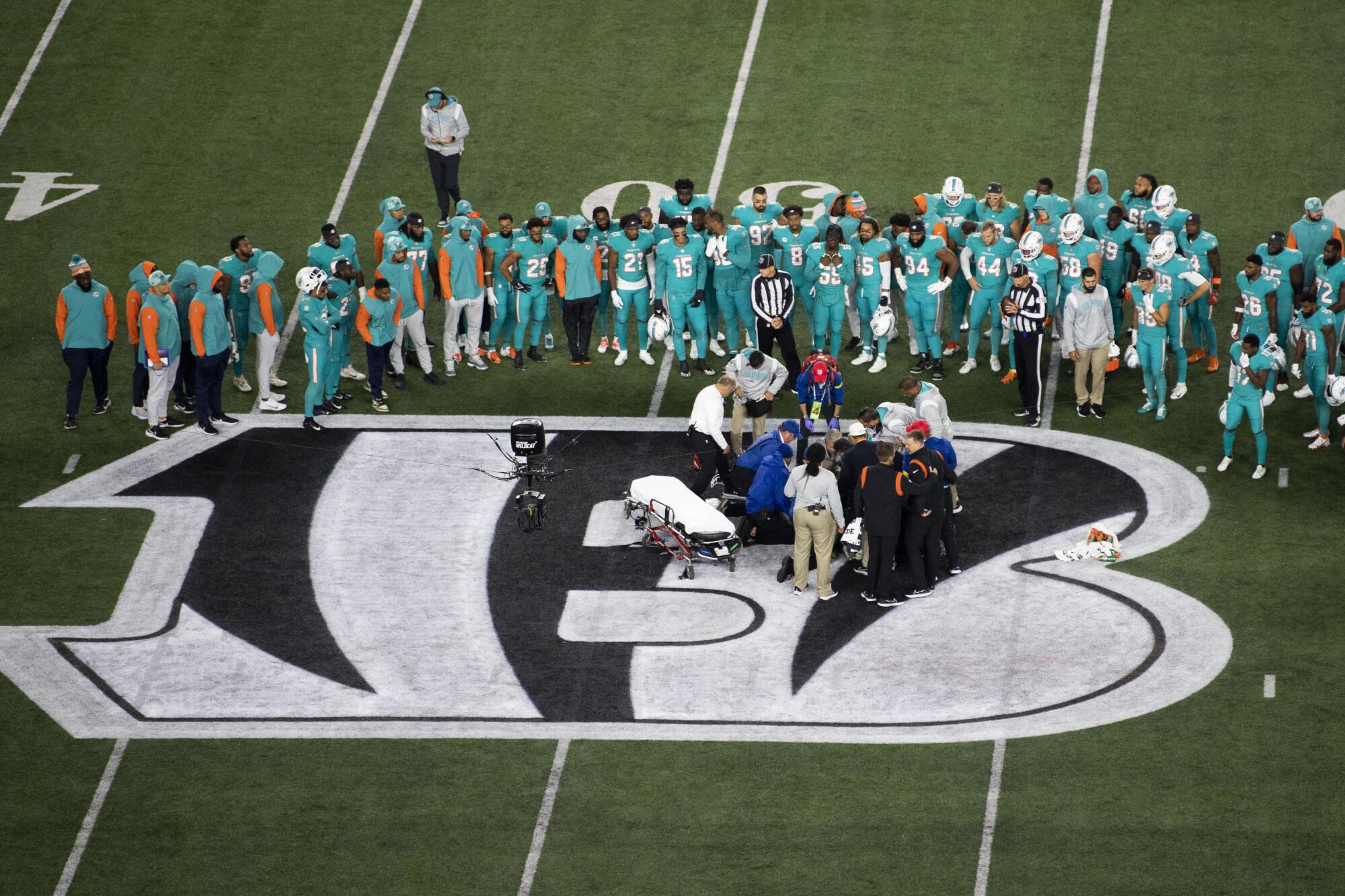
In the wake of the Tagovailoa incident, the NFL Players Assn. fired the unaffiliated neurotrauma consultant (UNC) involved in the concussion check, a move the NFL did not support. The league said the protocols were followed to the letter.
On Saturday, the league and the union announced changes to the concussion protocols by adding “ataxia” to the mandatory “no-go” symptoms. Ataxia is defined as an abnormality of balance/stability, motor coordination or dysfunctional speech (caused by a neurological issue). A player who exhibits any of those symptoms is automatically put in the concussion protocol and cannot return to the game.
Dr. Allen Sills, the NFL’s chief medical officer, described a scenario in which a player might have an unstable knee or ankle and might be exhibiting gross motor instability because of that. Under the old protocols, that physical history would have been taken into consideration. Now, it will be assumed the player has suffered a brain injury, prohibiting him from returning to the field.
Said Sills: “We and the Players Assn. have agreed to be conservative in that situation … and remove that burden from the team, physician and UNC to try to determine whether it’s from the brain or some other injury.”
Images are powerful and can lead to change.
“With some things, it’s almost like if you didn’t see it, it didn’t happen,” said Richie Zyontz, NFL producer for Fox since the network began broadcasting games in 1994.
Zyontz recalled a situation during a pivotal game when his broadcast team inadvertently showed a gruesome injury over and over. The replay was focused on a fumble at the goal line, but the network didn’t notice that another player — not near the ball but in frame — was in the middle of a catastrophic knee injury.
“We were so caught up in trying to establish the turnover and control of the ball that we weren’t cognizant of this really bad injury taking place,” said Zyontz, who declined to identify the player or team. “Now we’re bringing in our rules expert and he’s analyzing what might have happened, whether it was a turnover.
The Times’ Sam Farmer analyzes each matchup and predicts the winners in NFL Week 5. The Eagles will remain undefeated while the Rams will beat the Cowboys.
“Now I’m getting a call from the PR guy of the team with the injured player and he’s saying, ‘Why the hell are you showing that over and over again?’ The GM apparently was on his back, and they’re looking at the monitor where they sit in the press box. I never would have done that had I been cognizant of the injury quicker.”
While acknowledging the odd position of Tagovailoa’s hands was disturbing, Gaudelli said he’s highly sensitive to replaying gruesome injuries.
“I did horse racing where they euthanize horses on the track, a horse that was just running a race,” said Gaudelli, who moved from NBC to Prime Video this year. “We had a philosophy for that. You wouldn’t show the horse being euthanized. You would show the equine ambulance from a very good distance so you would be able to see the scene but not the details.”
During Super Bowl XLIX between Seattle and New England in 2015, the Seahawks’ Jeremy Lane intercepted a Tom Brady pass and was knocked out of bounds on his return. NBC cut to a commercial, as it does for a change of possession.
“During the commercial, you could see Jeremy Lane was on the ground,” Gaudelli said. “So I’m looking at the replay and his elbow got dislocated in such a gross way, I’m like, ‘Al [Michaels] and Cris [Collinsworth], I can’t show the injury. We’ll show the interception. Just tell them the injury is too grotesque.’ ”
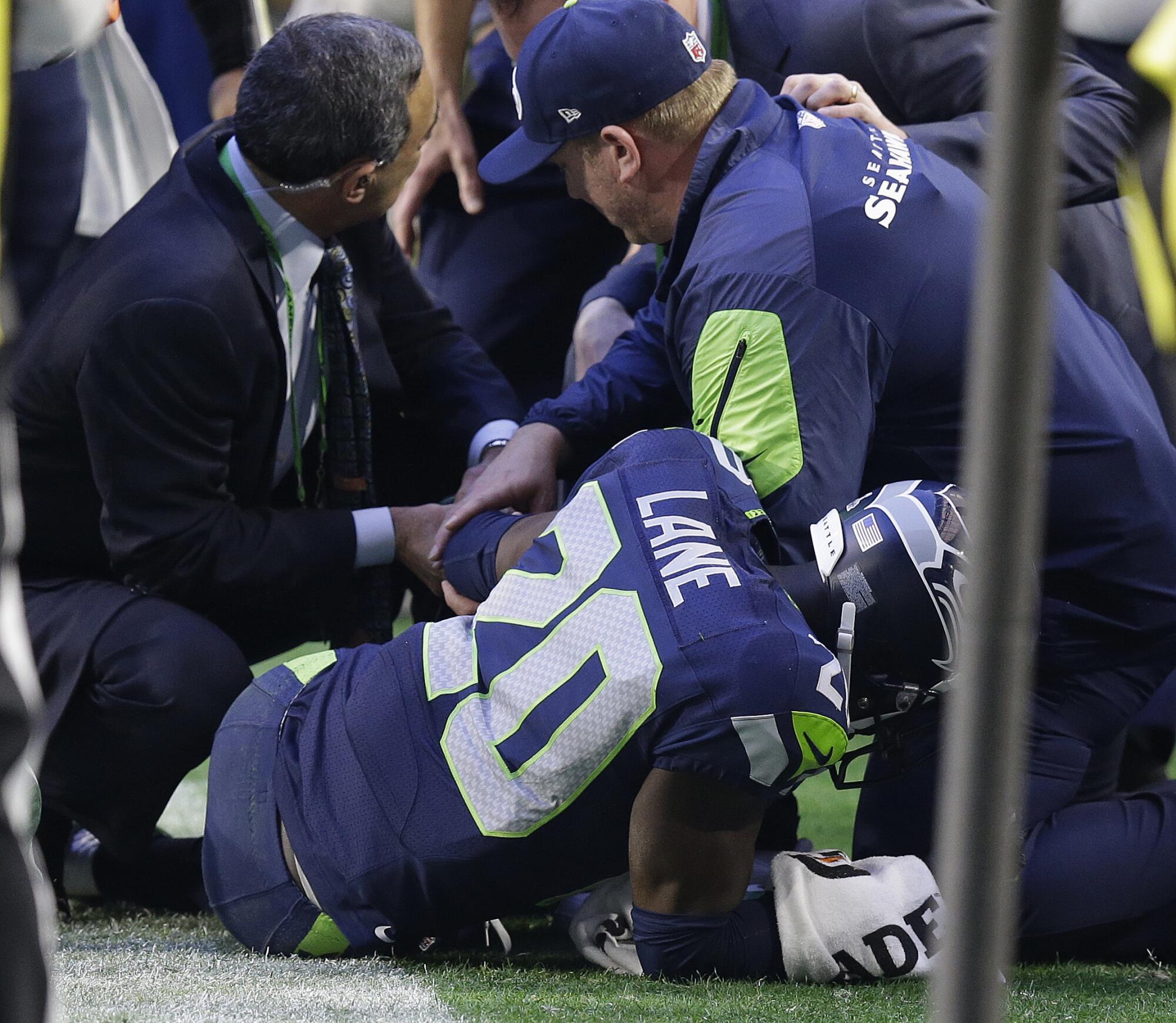
NBC simply showed Lane being walked to the locker room with a towel draped over his injured arm.
“Bones are bones, and bones heal,” Gaudelli said. “So I elected not to show that in the Super Bowl. I can see how someone would think [Tagovailoa’s hands were] disturbing, but I didn’t think we could ignore it.”
Harold Bryant, executive vice president of production at CBS, said his network tries to use the reaction of fans, teammates and coaches to tell the story when a player suffers a serious injury.
“Once the player is on a stretcher and being rolled off, we try to capture that moment as opposed to seeing the replay over and over,” he said.
But Bryant was quick to add: “I will never criticize how anybody else does it because you don’t know what’s going on at that moment, what the thought is, what they’ve heard in the booth. Maybe it wasn’t as bad of an injury and you’re trying to document it properly. “
CBS did not show replays when Louisville’s Kevin Ware suffered a horrific broken leg in an Elite Eight game, or the leg injuries to NFL stars Alex Smith and Dak Prescott.
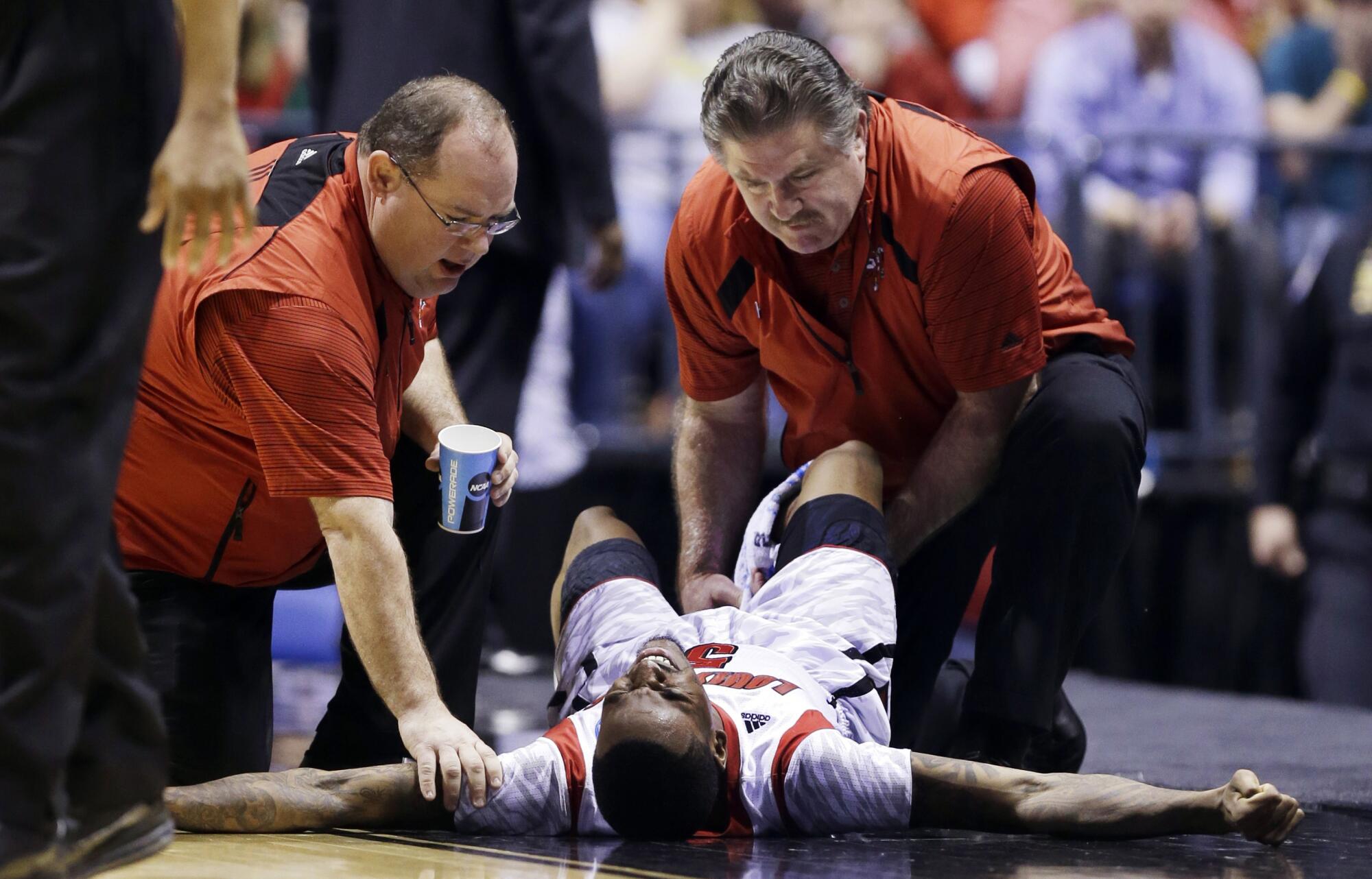
“I try to think about it as if that were my son out on the field who was injured,” Bryant said. “How would it feel at home watching something like that? We try to be respectful, and we don’t want our announcers to speculate. I think that’s another area where you can sometimes get in trouble.”
Sometimes injuries that are uncomfortable to watch become part of a great story that’s unfolding. There was Matthew Stafford refusing to leave the game after suffering a dislocated shoulder and leading the Detroit Lions to victory. Or Tiger Woods dropping to his knees in pain after a shot but gritting through it.
“Tiger wincing in pain, that’s a little different,” Bryant said. “That’s the type of moment we will replay, especially because he kept walking and limping his way through it. You’re not seeing something overly gruesome or something like that.
“It’s not always easy finding that balance. If you have a concussion and a guy is grabbing his helmet, that might be something you replay a few more times.”
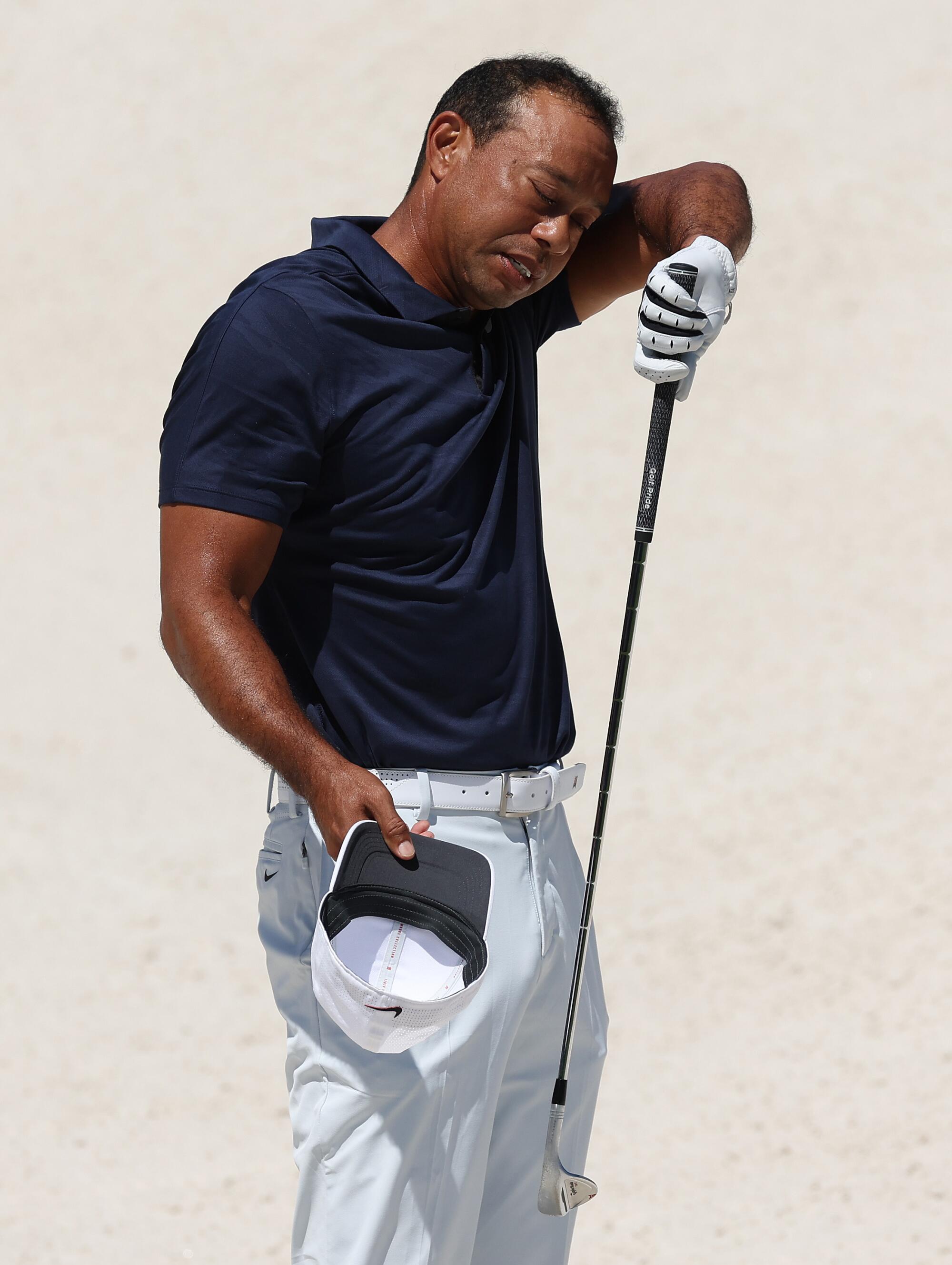
The NFL said it provides guidance to its network partners to be “sensitive and respectful” to the individual and judicious about showing replays of certain plays and injuries.
“On-air broadcasters are also aware that they should not guess or diagnose an injury based on video alone as it only leads to speculation,” a league spokesman told the Los Angeles Times in a written statement. “Only medical personnel who are directly treating the player can properly diagnose an injury. Armchair quarterbacks watching a play 3,000 miles away on TV, online or a mobile device cannot.
“The club will provide information to the network as it becomes available from medical personnel.
“In addition, cameras and personnel should not interfere with medical personnel and their ability to care for the player in a private manner.”
On occasion, there’s no need for speculation. The injuries are obvious and stomach-turning. Perhaps the most famous was the career-ending broken leg Washington’s Joe Theismann suffered on “Monday Night Football” in 1985. It was a compound fracture and the quarterback would later say his lower leg “snapped like a breadstick.”
Theismann said he has seen the replay only once in 37 years. That was on the 20th anniversary of the injury, when a reporter came to Washington and convinced him to watch video of that entire game against the New York Giants.
“As we got closer to the moment of the leg, my stomach started getting a little queasy,” Theismann said. “I didn’t know when it was going to happen. I had a rough idea. Then I saw it and that’s the last time I’ve ever seen it.”
NFL readers want to know if Chargers coach Brandon Staley in danger of losing his job, and should Rams coach Sean McVay rely more on his offensive coordinator?
He said he looked away during a scene of his injury in the movie “The Blind Side,” and that his wife informed him when he could open his eyes. His right leg is now a little crooked and a half-inch shorter than his left. It affects his knee, hip and back. He can’t wear dress shoes for long and instead opts for sneakers.
“People will tell me, ‘I know exactly where I was when [the injury] happened,’ ” Theismann said. “And nowadays, you get to the point where people say, ‘My dad told me about it.’ It has something in the neighborhood of 20 million views on different sites.”
But Theismann never needs to see it again. His motto: Tell me, don’t show me.
More to Read
Go beyond the scoreboard
Get the latest on L.A.'s teams in the daily Sports Report newsletter.
You may occasionally receive promotional content from the Los Angeles Times.

